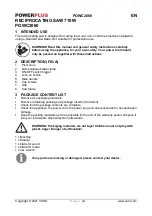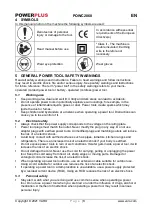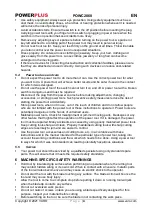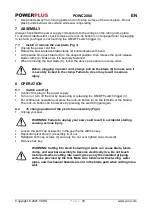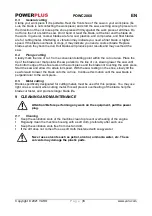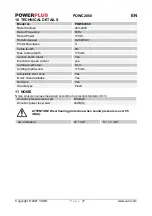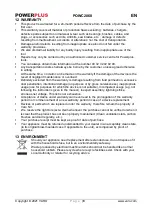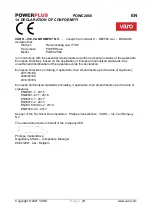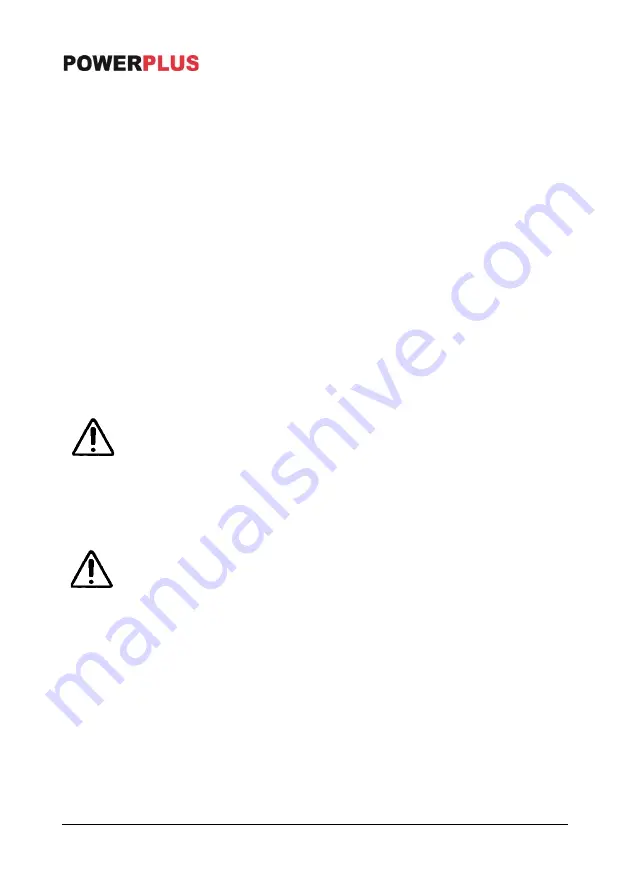
POWC2060
EN
Copyright © 2021 VARO
P a g e
|
6
www.varo.com
8.3
General cutting
Clamp your work piece if it is portable. Rest the front shoe of the saw on your work piece (be
sure the blade is not contacting the work piece) and start the saw, exerting enough pressure in
the direction of the cut to keep the shoe pressed firmly against the work piece at all times. Do
not force the cut or stall the saw. Don’t bend or twist the blade, let the tool and the blade do
the work. In general, coarser blades are for wood, plastics, and composites, and finer blades
are for cutting metal. Chattering or vibration may indicate you need a finer blade or higher
speed. If the blade overheats or clogs, it may indicate you need a coarser blade. Replace
blades when they become dull. Dull blades will produce poor results and may overheat the
saw.
8.4
Plunge cutting
Clearly mark the line of cut, from a convenient starting point within the cut out area. Place the
tip of the blade over that point with saw parallel to the line of cut, slowing lower the saw until
the bottom edge of the shoe rests on the work piece and the blade not touching the work piece.
Start the saw and allow it to attain full speed. With the saw resting on the shoe, slowly tilt the
saw forward to lower the blade onto the cut line. Continue this motion until the saw blade is
perpendicular to the work piece.
8.5
Metal cutting
Blades specifically designated for cutting metals must be used for this purpose. You may use
light oil as a coolant when cutting metal, this will prevent overheating of the blade, help the
blade cut faster, and promote longer blade life.
9 CLEANING AND MAINTENANCE
Attention! Before performing any work on the equipment, pull the power
plug.
9.1
Cleaning
▪
Keep the ventilation slots of the machine clean to prevent overheating of the engine.
▪
Regularly clean the machine housing with a soft cloth, preferably after each use.
▪
Keep the ventilation slots free from dust and dirt.
▪
If the dirt does not come off use a soft cloth moistened with soapy water.
Never use solvents such as petrol, alcohol, ammonia water, etc. These
solvents may damage the plastic parts.


